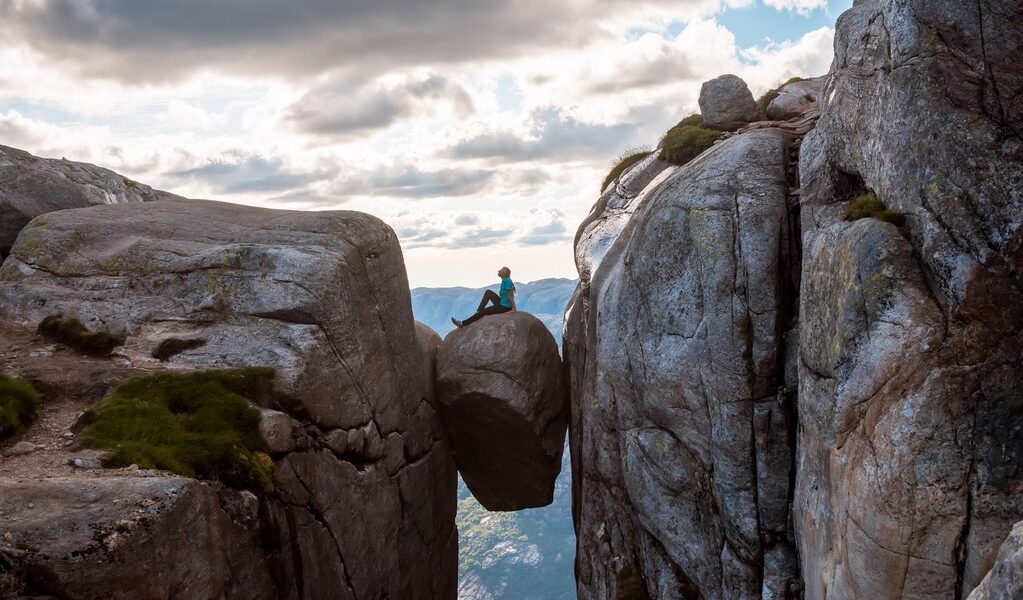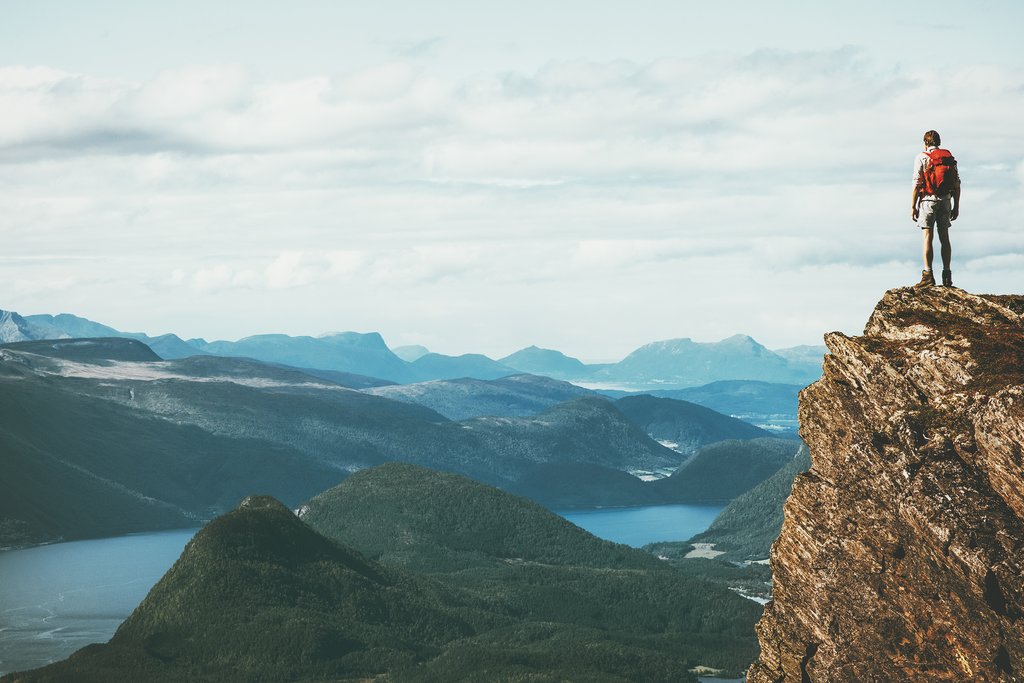
A guide to hiking in Norway is akin to swimming in the Pacific — where do you even begin to explore? What ground you decide to cover will depend on your endurance level, the season, and how much time you have. Stunning views are around every corner; here, nature is left at its most pristine. Hiking is one of Norway’s most beloved pastimes, and this is why.
Norwegians hold a deep reverence for nature, an appreciation so profound that it permeates their very being. Step onto Norwegian soil, and within mere seconds, you’ll intuitively understand why. The concept of allemansretten, the “freedom to roam,” is more than just a legal principle; it’s a cultural cornerstone that transforms the entire country into an accessible, welcoming landscape. Imagine Norway as a vast, inviting open door, beckoning you to explore its wonders. But this invitation isn’t passive; it requires your active participation. It calls upon you to lace up your boots, embrace the spirit of adventure, and set out on foot, immersing yourself in the unparalleled beauty that awaits. Prepare to be captivated by the raw, untamed landscapes that define Norway’s character.
## The Tourist-Catchers: Pulpit Rock, Trolltunga, and Kjeragsbolten – Icons of Norwegian Hiking
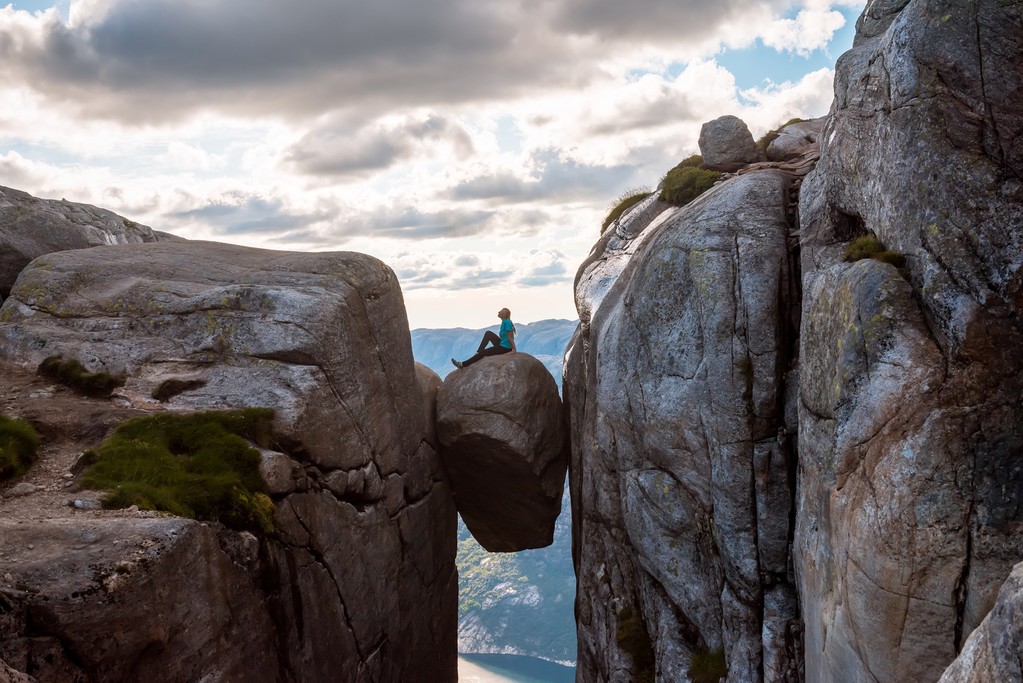
When discussing famous summits in Norway, certain names inevitably rise to the top. These are the iconic destinations whose images have circulated widely, gracing postcards and captivating imaginations worldwide. Pulpit Rock, also known as Preikestolen, immediately springs to mind. Envision a remarkably flat platform, a near-perfect square measuring approximately 25 by 25 meters, dramatically perched high above the Lysefjord. Then there’s Trolltunga, whose very name evokes its distinctive shape. This geological marvel resembles a giant tongue, extending horizontally from the mountainside, offering breathtaking panoramic views. And, of course, we cannot forget Kjeragsbolten. This gravity-defying spectacle is a massive boulder, seemingly impossibly wedged between two sheer cliffs, suspended a staggering kilometer above the glistening waters below. The sight of this precarious rock is truly awe-inspiring.
If you aspire to conquer one of these classic Norwegian hikes, it’s crucial to be prepared for a specific reality: you won’t be traversing these trails in solitude. Popularity comes with its own set of considerations, and these destinations attract visitors from around the globe. However, the presence of other hikers isn’t always a disadvantage. In some instances, it can be beneficial, especially if you find yourself questioning the correct path or requiring assistance along the way. The shared experience can foster a sense of camaraderie and support. However, if you’re seeking a more secluded experience and wish to minimize the impact of crowds, consider seeking out insider tips on how to visit these “rock stars” like a seasoned local. These strategies might involve visiting during off-peak seasons or exploring alternative routes to avoid the busiest areas. Regardless of the crowds, the reward that awaits you at the summit of each of these hikes is undeniably worth it. The unparalleled vistas and sense of accomplishment will leave an indelible mark, making the journey worthwhile despite the presence of other adventurers.
Among the three, Pulpit Rock presents the most accessible challenge. The hike covers approximately four miles (6 kilometers) and typically takes about four hours to complete on a round-trip basis. Kjeragsbolten poses a moderate challenge, with a distance of six miles (10 kilometers) and an estimated round-trip time of five hours. Trolltunga, however, stands as the most demanding of the trio, requiring a significant commitment of both time and energy. This hike stretches for 17 miles (27.5 kilometers) and demands approximately 12 hours to complete. Therefore, it’s imperative to accurately assess your physical capabilities and choose a hike that aligns with your fitness level. For safety reasons, it’s important to note that all of these hikes should ideally be undertaken during the summer months, when weather conditions are more stable and daylight hours are abundant.
## Hiking the National Parks: A Journey into Norway’s Natural Heart
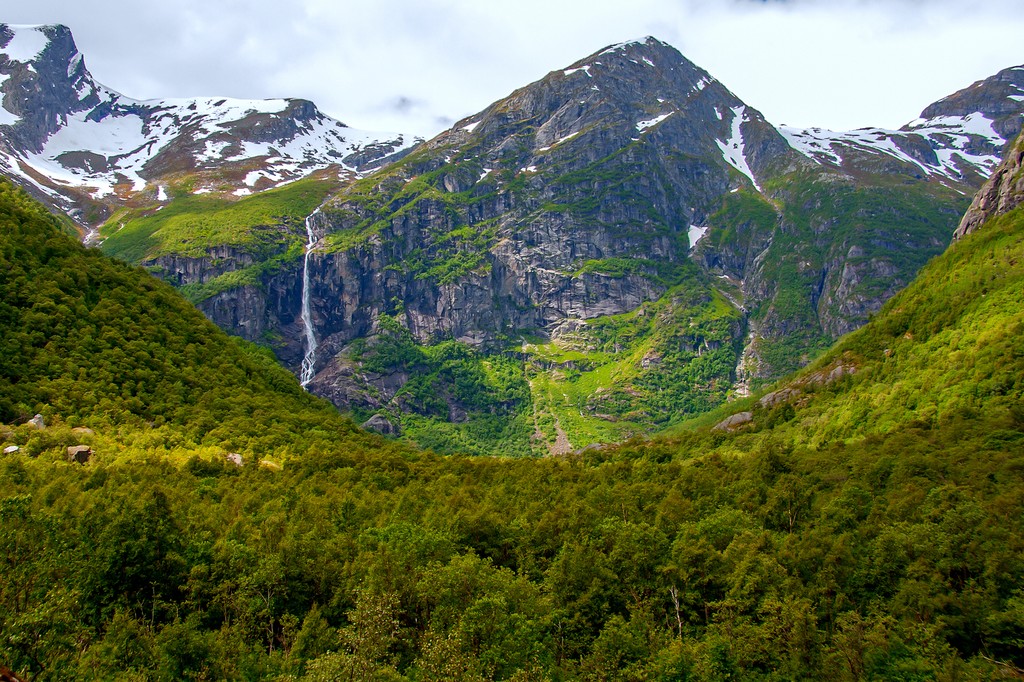
The region known as the “National Park Region” occupies a prime location, nestled comfortably between the bustling cities of Oslo and Trondheim. Within this vast expanse lie a collection of exceptional national parks, each possessing its unique character and allure. These include Dovrefjell National Park, Rondane National Park, Jotunheimen National Park, Breheimen National Park, Reinheimen National Park, and Dovre National Park. Collectively, these parks form an unparalleled wilderness area that could easily occupy weeks of exploration, should you choose to immerse yourself fully in their beauty. Of course, such an extended journey would necessitate proper preparation, including the essential element of a sturdy, reliable tent!
Within the boundaries of Jotunheimen National Park, one particular hike stands out as a true classic: the trek to Besseggen. This renowned route follows a long, narrow ridge, offering breathtaking views on both sides. The Besseggen hike typically takes around seven hours to complete, demanding a reasonable level of fitness and endurance. This region, along with several others, such as Rondane and Hardangervidda, is home to Norway’s remarkable network of self-service cabins. These provide comfortable and convenient accommodations for hikers, allowing you to extend your adventures and transform a day trip into an overnight excursion or even a multi-day trekking adventure through the backcountry. While Besseggen is a highlight, it’s important to recognize that every national park in Norway is, in its own way, ideally suited for hiking. The key lies in discovering the specific trails and landscapes that resonate most deeply with your personal preferences and interests.
Beyond the well-known national parks, a multitude of others await exploration, some offering truly extraordinary hiking experiences: the opportunity to walk upon a glacier. While glacier hiking necessitates the guidance of a qualified professional, the experience of traversing the shimmering blue ice within either Folgefonna National Park or Jostedalsbreen National Park will undoubtedly be an unforgettable highlight of your trip.
Here’s a tip for enhancing your Norwegian adventure: South of Jostedalsbreen lies the majestic Sognefjord, one of the largest fjords in the entire country and a location renowned for its awe-inspiring vistas. In this area, you can embark on a hike through Norway’s very own “Grand Canyon,” the stunning Aurlandsdalen Valley. You have the option of hiking the entire length of the valley, utilizing the strategically placed cabins along the way for comfortable overnight stays, or you can opt for shorter, more manageable treks as enjoyable day trips.
## Hiking in Northern Norway: Untamed Beauty and Endless Daylight
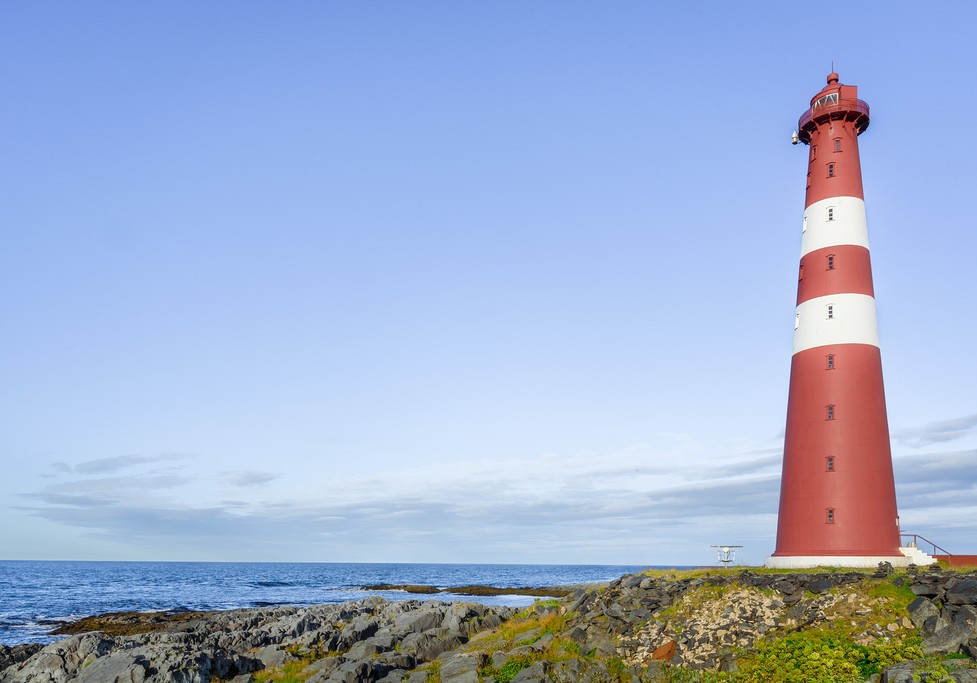
Northern Norway is characterized by its lower population density, resulting in fewer crowds, a welcome attribute that extends to its hiking trails. As you venture further north, the likelihood of enjoying a sense of solitude and tranquility increases dramatically. The natural beauty of the region is amplified by the unique phenomenon of the summer months: seemingly endless daylight. During this period, you could potentially hike for a full 24 hours, immersed in the soft glow of the midnight sun, if you so desired.
You have the option of ascending the coastal mountains, which reach elevations of around 4,000 feet at their highest points. Consider summits such as Torghatten, De syv søstre (the Seven Sisters), or Stetind Mountain, the designated national mountain of Norway. While the altitude may not seem particularly extreme compared to other mountain ranges around the world, it’s important to note that Stetind presents a significant challenge and is best suited for experienced and avid hikers.
The Finnmark coast offers more accessible hiking options with gentler elevations. You can explore the rolling hills that lead to the Slettnes Lighthouse, a picturesque landmark on the coastline. For a more challenging experience, consider tackling the renowned Queen’s Route in Vesterålen. Cape Kinnarodden, recognized as the northernmost point on mainland Europe, is a destination in itself, although reaching it requires a reasonable level of physical fitness.
It is even possible to hike from Norway all the way to Finland, following a remarkable trek that highlights the natural beauty of both countries. Start your journey in the deep gorges and valleys of the Lyngenfjord, and gradually make your way towards Kilpisjärvi. For this extended trek, it is strongly recommended to enlist the services of a guide who can provide invaluable expertise and ensure your safety. And if you’re truly seeking a complete escape from civilization, investigate the legendary Arctic Trail: a 500-mile route that traverses the mountainous terrain of Norway, Finland, and Sweden.
## City Hiking: Nature Within Reach
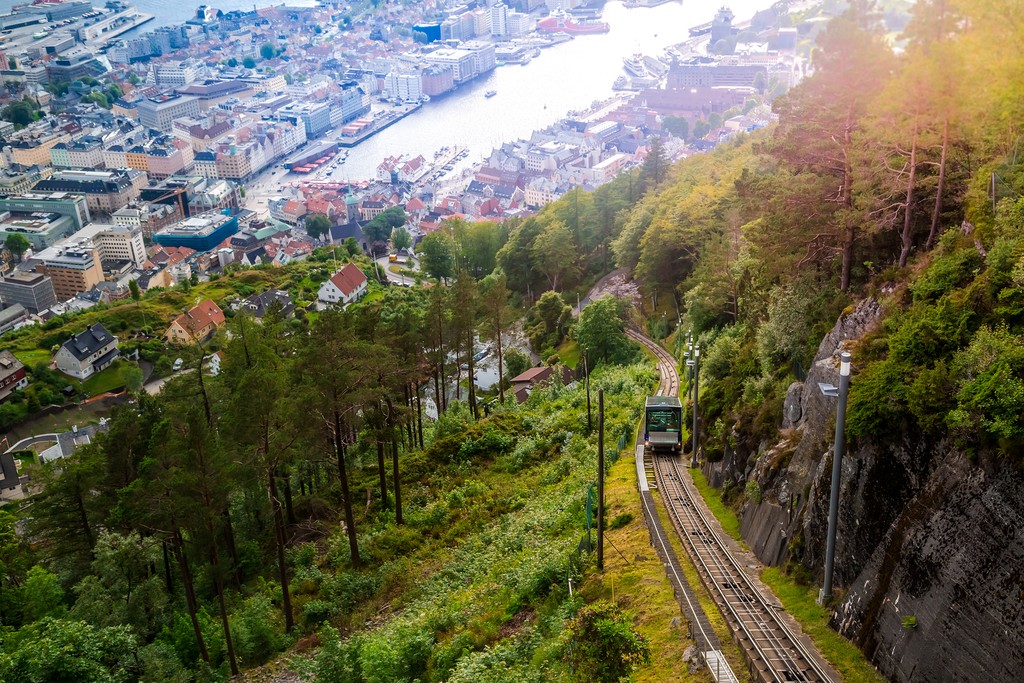
In Norway, you don’t necessarily have to venture far outside of urban centers to satisfy your craving for nature. The city of Bergen, for example, is uniquely surrounded by seven hills, providing ample opportunities for hiking and enjoying panoramic views. Two of these hills, Mt. Fløyen and Mt. Ulriken, are equipped with cable cars, offering the option of reducing the hiking time by half. While Ulriken is technically the higher of the two, Fløyen enjoys a more central location, making it easily accessible from the historic Bryggen wharf. You can choose to hike up, hike down, tackle both the ascent and descent, or even hike between the two mountains if your schedule allows.
Another exceptional viewpoint can be found at the Loen Skylift, one of the steepest tramways in the world. While Loen is located outside of a major city, the fact that the hike originates from a tram station adjacent to a hotel and restaurant makes it a readily accessible option. From the summit, you can explore the trails around Mt. Hoven and discover secluded vantage points with breathtaking views.
The cities of Ålesund and Haugesund serve as excellent gateways to nearby hiking destinations. From Ålesund, you can venture into the majestic Sunnmøre Alps or embark on a trek around the scenic Hjørundfjord. From Haugesund, consider climbing the impressive Langfoss Waterfall, hiking through the Etnefjella mountains, or exploring the fascinating glacial potholes at Rullestad.
## Hiking Tips: Essential Knowledge for a Safe and Rewarding Experience
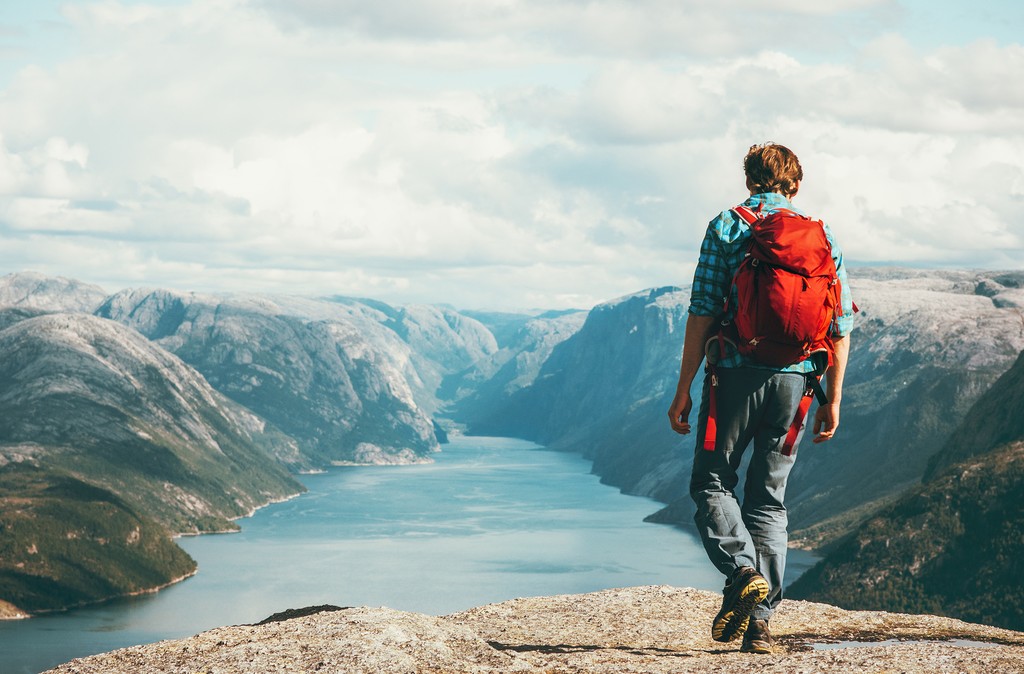
To begin, it’s essential to be aware of Norway’s extensive network of cabins, strategically located throughout the country’s diverse landscapes. These cabins are maintained and operated by the Norwegian Trekking Association (DNT). The level of amenities can vary; some cabins offer basic shelter, while others provide a more comfortable and well-equipped experience, comparable to a modest hotel. If you plan to embark on a trek through the wilderness, utilizing these cabins can greatly enhance your journey, providing convenient resting points and shelter. However, it’s crucial to register with the DNT beforehand and adhere to their specific requirements, which include a nominal fee.
Another fundamental aspect of hiking in Norway is understanding the deep respect that Norwegians hold for their natural environment. The nine rules of fjellvettreglene, often translated as the “rules of mountain intelligence,” are taken very seriously and serve as a code of conduct for responsible outdoor behavior. In addition to prioritizing your own safety and well-being (which includes knowing when to turn back), you also have a responsibility to protect and preserve the land you traverse. Adhere to the principle of “leave no trace”: take only pictures, leave everything as you found it, and return home with cherished memories. The freedom to roam comes with the obligation to respect the delicate ecosystems beneath your feet.
Beyond these specific considerations, it’s important to remember the basic principles of safe and responsible hiking. Wear sunscreen and dress in layers, as the weather in certain areas of Norway can be notoriously unpredictable and change rapidly. Invest in a pair of sturdy hiking boots that provide adequate support and traction. Pack an ample supply of water and nutritious snacks to maintain your energy levels. Whenever possible, travel with a companion to enhance safety and provide mutual support. Carry detailed maps and a compass, and familiarize yourself with the planned route. Thoroughly research the trails and weather conditions before setting out. For a single night, you are generally permitted to pitch your tent virtually anywhere, provided that you maintain a distance of at least 500 feet from the nearest cabin or house. You are also welcome to pick mushrooms and berries, but be sure to familiarize yourself with the regulations surrounding the harvesting of cloudberries.
In summary, by taking care of yourself, respecting the landscape, and adhering to the principles of responsible hiking, your Norwegian adventure has the potential to become the most epic and unforgettable experience of your life.
B-1964

